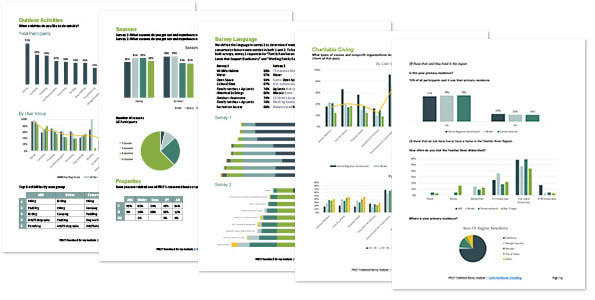I’m working with a small non-profit in California on a large web redesign that includes performing user research and developing a content strategy before moving into design. Because of a limited budget, our user research phase only included an online survey and a Google Analytics review of their current site. However, once the user research was underway, we ran into a few issues.
challenges
I designed the online survey with mostly closed-ended questions to uncover patterns among responses that differentiated the user groups (e.g. their relationship with the organization, interests, prime motivators, etc). Two hundred individuals completed our online survey, but my analysis revealed that roughly 80% of participants fell into the same user group—leaving relatively little data to identify patterns among the other user groups.
Google Analytics data from the current site was limited as well because of minimal traffic and visitor engagement. I pulled some basic audience data but struggled to recognize many useful trends or themes from users’ online behaviors.
solution
Our user group definitions wouldn’t be backed by solid data which felt too risky to base our content strategy and design decisions on—especially since this was the first user research of any kind the organization had performed. So, to feel more confident in our user groups models, we expanded the user research activities to include:
1. user group workshop
We invited staff who regularly engaged with the organization’s constituents to a workshop to round-out the user models the project manager and I had created. They spent a morning sharing assumptions about the user groups’ attitudes + beliefs, interest + motivation, experiences, concerns, digital behavior and demographics. Their ideas generated more well-rounded definitions than just the project manager and I could produce as a team of two.

2. second online survey
We needed to attract more diverse participants for our second survey to gather information on more user groups. We asked ally organizations to promote the survey and created targeted Facebook ads to users that fell into our segments. Combining the two surveys, we had 300+ participants and had much more—and better—data to analyze.

3. user interviews
Staff conducted interviews with two to three people from the three groups we identified as our primary user groups. The interviews helped us understand participant preferences and attitudes. They provided extremely useful information that helped validate or negate assumptions we’d formed.
After adding these three research activities, we have a solid grasp of our users’ needs. We just finished up creating personas and I feel much more confident that they accurately define our users. I’m grateful to have a client that recognized the importance of user research!

conclusion
A limited budget or timeline for user research can be challenging. As more information is uncovered, unpredictable issues can arise. Having the ability to adjust a timeline and scope of work is important to ensure a web redesign project accurately addresses users’ needs.





